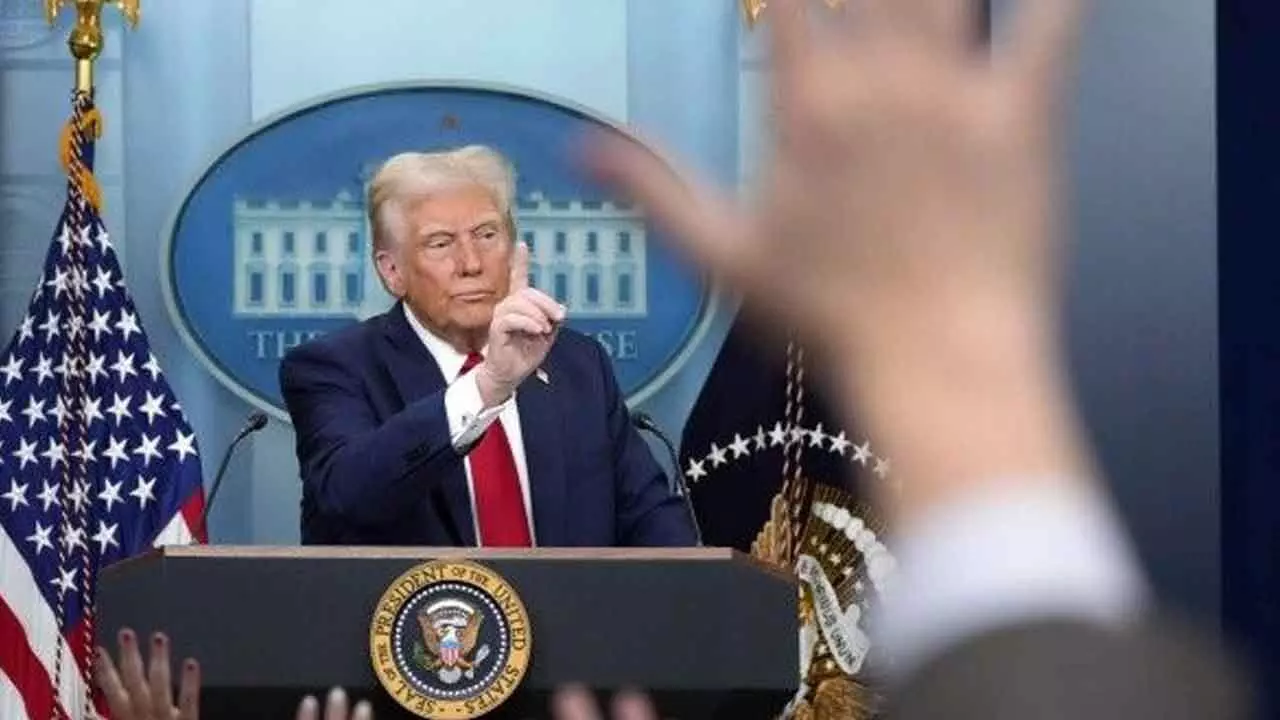The Iran Nuclear Deal Will Determine Middle East Stability
Donald Trump’s stance on Iran has unsurprisingly been belligerent
The Iran Nuclear Deal Will Determine Middle East Stability

For the second week in a row, senior officials from the United States and Iran will get together to take part in talks about the Iranian nuclear programme. It’s the second round in the latest negotiations – the first having taken place in Oman on April 12.
But recent statements from both the White House and senior Iranian officials, including a difference of opinion on where the talks should be held, suggest that rapid diplomatic successes may not be forthcoming.
President Donald Trump’s stance on Iran has unsurprisingly been belligerent. It was the first Trump administration that withdrew from the 2015 nuclear deal and imposed the policy of “maximum pressure” on Iran. Since returning to the Oval Office, Trump has reimposed this policy of maximum pressure.
Posting on X, the US special envoy to the Middle East, Steve Witkoff, declared that “Iran must stop and eliminate its nuclear enrichment and weaponization program”. He also called for verification of any missiles stockpiled in the Islamic republic.
Iranian officials vociferously rejected these US demands, with the foreign minister, Abbas Araghchi, asserting that the missile programme is not for discussion.
Tehran needs a deal:
There is little doubt that Iran wants a deal, perhaps even needs a deal. It has been hit hard by sanctions over the past decade, which has hollowed out the country’s middle class.
Israel’s military strikes on Iran and its allies over the past year have eroded the ideological and military clout of the Islamic Republic and wider “axis of resistance”. With the weakening of many of its allies, Iran’s missiles possess even greater importance as a deterrent.
The strong line taken by the Trump administration leaves little room for manoeuvre. It risks further emboldening hardline elements in Iran, who are perhaps less willing to engage diplomatically. But any belligerent rhetoric from voices in Iran risks pouring fuel on an already incendiary situation.
At the same time, the Islamic Republic faces a range of serious pressures domestically, such as that seen in the woman, life, freedom movement, as well as increasingly vocal opposition from abroad – notably from the self-proclaimed Crown Prince Reza Pahlavi, the son of the Shah who was ousted in 1979.
Though Iran may want a deal, it cannot capitulate – particularly after the events of the last year. And nor should it.
US weighs its strategy:
Hawks in the US, Israel and elsewhere have, of course, heralded the Trump administration’s stance. Fears of an Iranian nuclear programme continue to drive the actions of Israel’s Prime Minister, Benjamin Netanyahu, and others – although reports have just emerged that proposed Israeli strikes on targets in Iran were vetoed by Trump in favour of more negotiation.
While the Gulf States would once have celebrated a tough stance on Iran, the situation is different now. Iran’s long-time rival, Saudi Arabia, has put aside decades of animosity in the hope of a more prosperous shared future.
In a 2023 agreement mediated by China, Saudi Arabia and Iran agreed to normalise relations, reopening embassies and embarking on a series of coordinated military exercises. For Saudi Arabia, and in particular its crown prince and de facto ruler Mohammed bin Salman, regional stability is essential in realising the ambitious Vision2030 programme – which leans heavily into global investor confidence and trust.
As a result, the kingdom undertook a pragmatic shift in its regional affairs, embarking on a process of diplomatic rapprochement that surprised many observers. Riyadh has also taken steps towards normalisation with Israel, though the ongoing destruction of Gaza has paused such moves, at least for now.
At the same time as the nuclear negotiations take place, Israeli strikes on targets in Syria continue. The fall of the Assad regime at the end of 2024 – and the back seat taken by its long-time supporter, Russia – has dramatically altered the political landscape of Syria.
Though its former president, Bashar al-Assad, has found refuge in Russia, Moscow has taken a watching brief, eager not to antagonise Syria’s new regime and jeopardise its strategically important military bases on the Mediterranean coast. Members of groups previously favoured by the Assad regime, notably the Alawi communities, have fled to the Russian naval base at Latakia in search of protection. But thousands of others have been killed amid increasing violence as the forces of the new regime, led by Ahmad al-Shara, seek to extinguish all remnants of the Assad regime – a series of events that looks eerily similar to what occurred in Iraq 20 years ago, when the process of “de-Ba'athification” attempted to remove all traces of Saddam Hussein’s regime from public life.
Fragile regional order
The situation across the region is precarious, with the actions of global powers continuing to reverberate. While Washington puts pressure on Tehran and Moscow waits, the scope for Chinese influence in the region increases.

